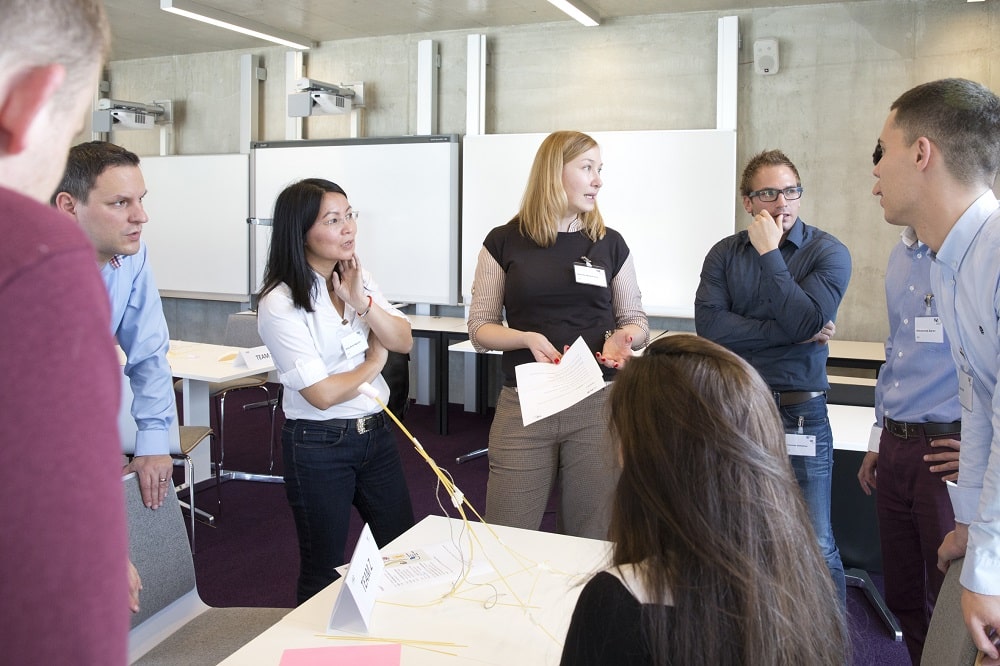Overview
Recommendations
Next Steps
Social media
The future of project management
In the past 20 years, the project management landscape has undergone fundamental changes. At the same time, the amount of project work undertaken by companies has continuously increased across the business spectrum.
Prof. Martina Huemann, Head of WU Vienna's Project Management Group and Academic Director of the Professional MBA Project Management, explains why a company’s success—or lack thereof—depends more and more on its ability to carry out projects professionally, and what areas will be particularly relevant in this context in the future.
Nowadays, modern businesses are increasingly managed by projects. In order to stay competitive, businesses have to innovate, continuously reposition themselves and constantly optimize their products and services. Carrying out project work successfully is indispensable when it comes to addressing these challenges. “What makes ‘management by projects’ difficult is the fact that you need to be able to distinguish between line-function tasks and things that should be dealt with in a project context. Not everything is a project—otherwise, your business will soon suffer from ‘projectitis’, and there will be nothing but projects. When you launch a project, you also have to ensure that effective project management is in place. Therefore, it is important to clearly define the degree of complexity beyond which projects are the best form of organization. Making this decision requires a good understanding of processes, a highly developed culture of collaboration, transparency and empowerment. Businesses that excel at bringing management by projects to life have a strategic edge: Apart from being able to take a targeted approach to both defusing tensions between competing forces and resolving inconsistencies, they can respond flexibly and professionally to complex situations in their environments,” says Martina Huemann. 2. Stakeholder Management and Agile Project Management

Most projects that fail do so as a result of not adequately taking into account or managing the expectations of stakeholders (suppliers, sellers, investors, authorities, citizens, the media, etc.). Frequently, however, stakeholders do not focus their attention on a project because it affects them only partially or indirectly. And this is precisely what makes getting them on board so difficult. In view of this, it is all the more important that projects can respond quickly and flexibly to changes in stakeholder interests. Ideally, stakeholders should have the opportunity to (co-)define project requirements.
“It is in this context that a new development in the field of project management, known as agile PM, can make an enormous difference: Agile PM is all about creating value for clients and other stakeholders, i.e. ‘management for stakeholders’, not ‘management of stakeholders’. Unlike traditional project management, which is planning-oriented in nature, agile PM takes a highly dynamic approach to managing projects and processes. This tremendously increases flexibility, makes it possible to adjust objectives throughout the project life cycle and thus promotes high stakeholder acceptance and engagement,” explains Martina Huemann.
3. PM 4.0
The latest and certainly most revolutionary trend in project management is PM 4.0. State-of-the-art software solutions, big data, social media and innovative simulation technologies have created heretofore unimaginable possibilities. Nowadays, those involved in a project can bring themselves up to speed on it at any time with the click of a mouse button; external suppliers, partners or sponsors can efficiently be included by means of comprehensive cloud solutions. Social collaboration platforms make it possible to interact, via blogs, wikis, messengers or forums, with otherwise unreachable or difficult-to-reach stakeholders. Special visualization tools serve the same purpose: At a very early project stage, when changes can still be made in a quick and resource-friendly manner, project managers can take advantage of them to visualize different scenarios. This will make the project more transparent and more “tangible”, empowering all stakeholders to get actively involved in shaping it.
4. Project Leadership

In a project management context, leadership is even more important than in a traditional business: Project teams are put together for a limited period of time for the purpose of carrying out a specific project. This is a particular challenge for the project manager, who needs to get the project up and running as quickly as possible. What is more, project teams usually operate outside the normal hierarchical management structures. As a result, project managers hardly ever have the authority to give direct instructions and frequently encounter considerable resistance:
“Unfortunately, projects are still widely regarded as a threat to traditional corporate hierarchies. Hence, in order to succeed, project managers must be able to quickly establish appropriate structures and simultaneously provide adequate leadership to the project team. What is particularly important in this context, apart from having subject-matter expertise, is to bring good social skills and great resilience to the table: Successful project completion depends more and more on how skillfully project managers deal with conflicts and divergent interests, and on whether they are capable of consistently pursuing their goals, even in the face of ‘strong headwinds’,” concludes Martina Huemann.